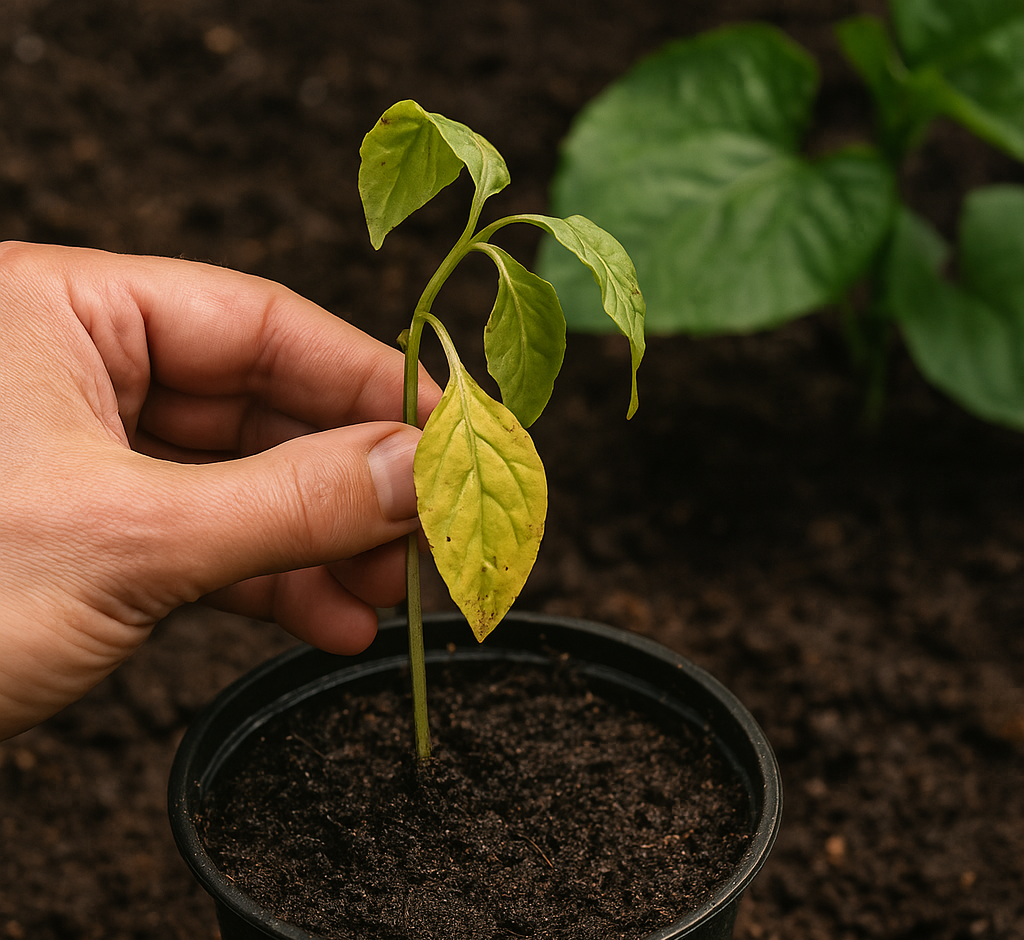
Why Your Plants Might Be Dying Without You Realizing It

Gardening is incredibly rewarding—but it’s easy to mess up, even with the best intentions. From watering too much to planting in the wrong spot, small mistakes can have big consequences. In this article, we’ll uncover the 10 most common gardening mistakes that could be silently killing your plants—and more importantly, how to fix them.
Mistake #1 – Overwatering: Drowning Your Plants Slowly
Giving your plants too much love—especially water—can do more harm than good. Overwatering suffocates roots, encourages fungal infections, and prevents oxygen flow.
Signs of Overwatering:
-
Yellowing, drooping leaves
-
Soil that remains soggy
-
Root rot and a musty smell
How to Fix It:
-
Water only when the top 1–2 inches of soil are dry
-
Use containers with proper drainage
-
Mix in perlite or sand to improve soil aeration
Mistake #2 – Underwatering: Starving the Roots
Neglecting your plants’ hydration needs can lead to wilting, dryness, and slow growth. Each plant has its own thirst level.
Best Practices:
-
Water deeply but less frequently
-
Early morning is the best time to water
-
Mulch helps retain moisture in hot weather
Mistake #3 – Using the Wrong Soil Type
Soil isn’t “one size fits all.” Your tomato plant won’t thrive in the same mix as your cactus.
Common Problems:
-
Poor drainage
-
Nutrient imbalances
-
Soil compaction
How to Fix It:
-
Conduct a soil test
-
Mix compost or organic matter regularly
-
Use plant-specific soil (e.g., cactus mix, vegetable garden soil)
Mistake #4 – Ignoring Sunlight Requirements
Not all plants bask in the sun. Some prefer shade, and putting them in the wrong spot leads to stress and poor performance.
Tips:
-
Read the plant tag or research its needs
-
"Full sun" means 6–8 hours of direct light
-
Rotate containers to ensure even exposure
Mistake #5 – Wrong Plant in the Wrong Zone
Each plant has a "hardiness zone"—a climate range where it grows best. Planting outside of that zone can doom it from the start.
How to Fix It:
-
Know your USDA hardiness zone
-
Choose plants adapted to your local climate
-
Protect non-hardy plants with mulch or by bringing them indoors
Mistake #6 – Skipping the Mulch
Mulch isn’t just for aesthetics. It regulates temperature, retains moisture, and reduces weeds.
Best Mulch Types:
-
Organic: wood chips, bark, straw
-
Inorganic: gravel, rubber, plastic sheeting
Apply a 2–3 inch layer, keeping it an inch away from plant stems.
Mistake #7 – Overfertilizing: When Help Becomes Harm
More fertilizer doesn’t mean more growth. In fact, it can burn roots and disrupt the soil's natural balance.
Signs of Overfertilizing:
-
Leaf burn (brown edges)
-
Rapid but weak growth
-
Salt buildup on the soil
Fix It:
-
Use slow-release fertilizers
-
Follow instructions exactly
-
Flush soil occasionally with clean water
Mistake #8 – Poor Garden Planning
No room to grow? That’s a common issue. Overcrowding restricts airflow, spreads disease, and makes maintenance harder.
Solutions:
-
Space plants based on their mature size
-
Use companion planting strategies
-
Practice crop rotation to preserve soil nutrients
Mistake #9 – Ignoring Pests and Diseases
Left unchecked, a tiny pest problem can escalate fast. Early identification is key.
Common Pests:
-
Aphids, slugs, spider mites
-
Fungal issues like powdery mildew
Prevention:
-
Inspect plants regularly
-
Use neem oil or insecticidal soap
-
Encourage beneficial insects like ladybugs
Mistake #10 – Not Pruning or Deadheading Properly
Deadheading spent blooms and pruning damaged branches improves airflow and boosts flower production.
Best Practices:
-
Use sharp, clean tools
-
Prune in early spring for most perennials
-
Deadhead regularly to promote blooms
Bonus: Mindset Mistake – Not Learning From Failures
Every gardener makes mistakes—it’s part of the process. What separates great gardeners is the ability to learn, adapt, and grow with each season.
Frequently Asked Questions (FAQs)
1. How can I tell if my plant is overwatered or underwatered?
Overwatered plants look yellow and limp with soggy soil. Underwatered ones are dry, brittle, and may wilt quickly.
2. Is it okay to use garden soil in pots?
Not really—garden soil is too heavy for containers. Use a well-aerated potting mix instead.
3. Can plants recover from fertilizer burn?
Yes, if caught early. Flush the soil with water and hold off fertilizing for a few weeks.
4. What’s the best mulch for vegetables?
Straw, grass clippings, or shredded leaves work great for veggie gardens.
5. How often should I prune my plants?
It depends on the plant, but generally once a year in early spring or after flowering.
6. What’s the easiest way to test soil pH?
Use an at-home soil pH testing kit, available at most garden centers or online.
Conclusion: Turn Your Gardening Errors Into Green Success
Even the most passionate gardeners slip up—but with the right knowledge, you can correct course quickly. Start by observing your plants, adjusting your routine, and staying curious. Fixing these gardening mistakes will not only save your plants but transform your garden into a lush, thriving oasis.
